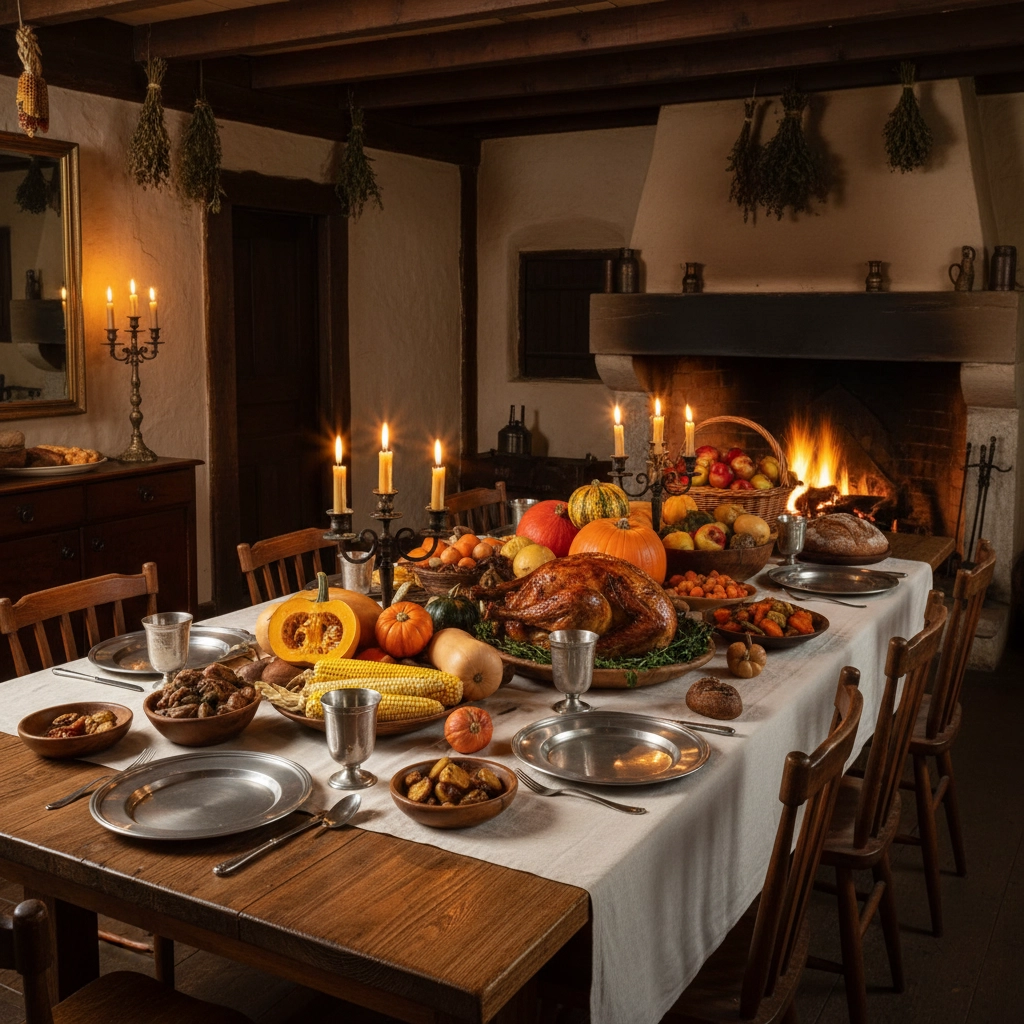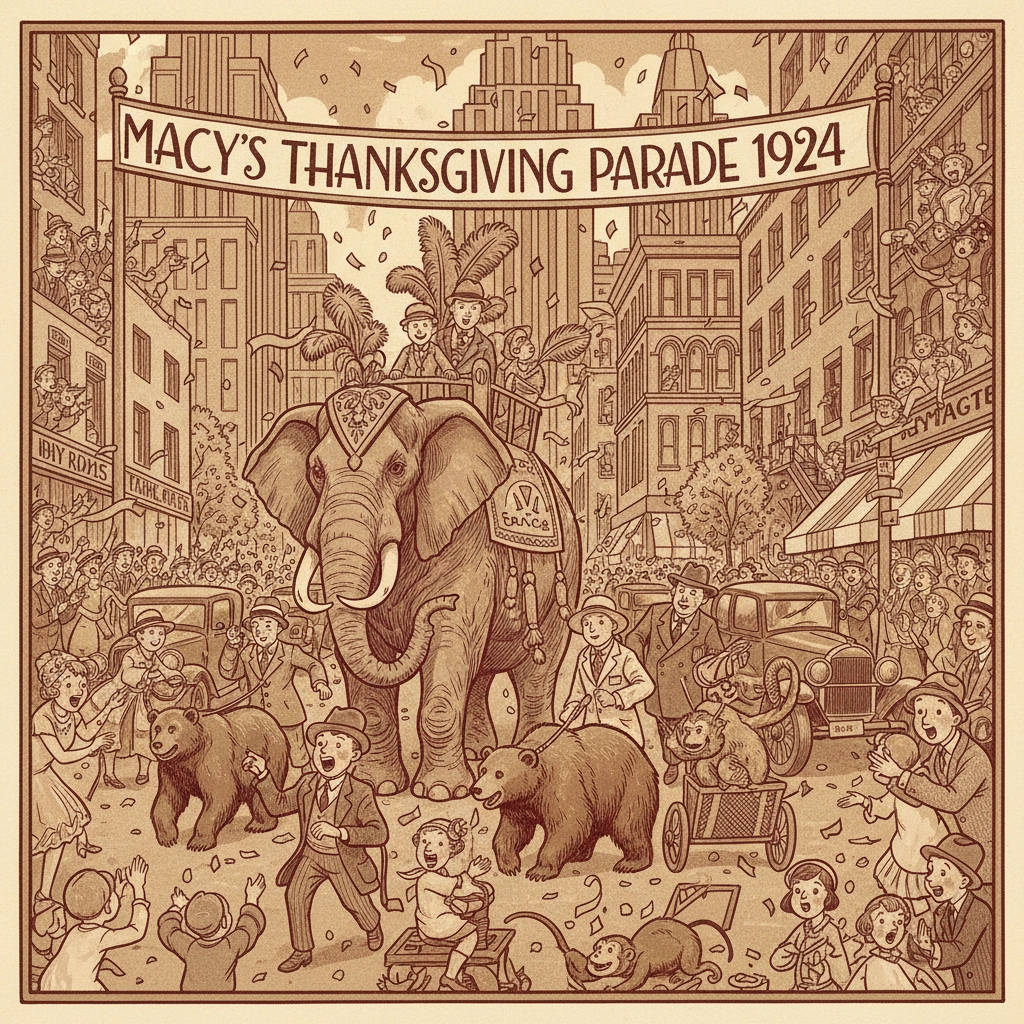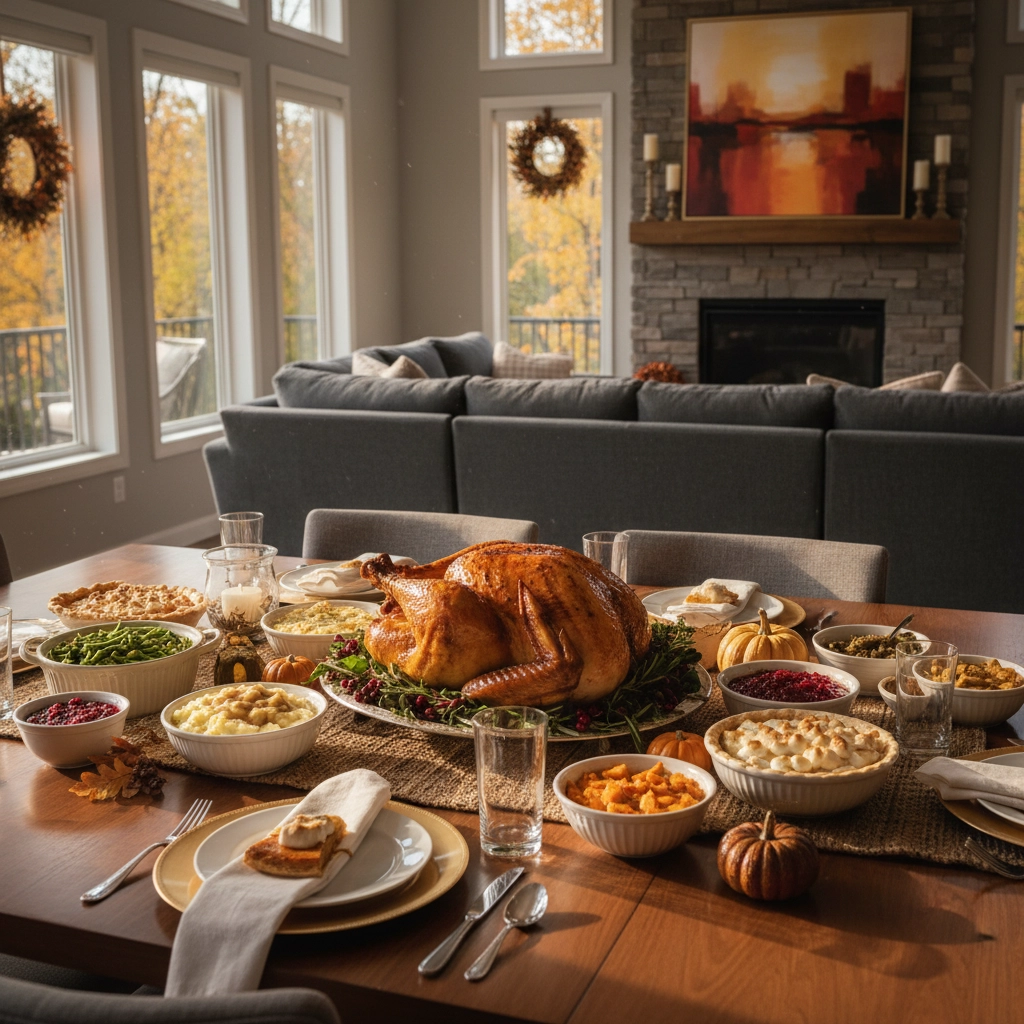The mortgage world is buzzing after President Trump announced he's working on a 50-year mortgage…
A Fun, Lighthearted Look at the History of Thanksgiving
Picture this: you're prepping for Thanksgiving in your cozy Columbus home, wrestling with a 20-pound turkey while your relatives debate whether the stuffing goes inside the bird or not. You might think you're carrying on a sacred American tradition that's been the same for centuries. Well, buckle up, because the real story of Thanksgiving is way more entertaining (and bizarre) than what we learned in school!
The "First" Thanksgiving Wasn't Really First (Or Even Called Thanksgiving)
Let's start with the big reveal: that famous 1621 feast between the Pilgrims and Native Americans? They didn't call it Thanksgiving. It was just a harvest party that got really, really good PR later on.
About 50 colonists and 90 members of the Wampanoag tribe, led by Chief Massasoit, got together in Plymouth, Massachusetts for what turned into a three-day feast. But here's where it gets fun – they probably weren't eating turkey! Historians believe the menu featured venison, seafood, and various wildfowl like ducks and geese. And forget about cranberry sauce and pumpkin pie – those were luxury items they couldn't whip up in 1621.
The whole "First Thanksgiving" narrative is actually a brilliant example of early American marketing. In 1769, some savvy descendants of the Pilgrims living in Plymouth decided they needed a tourism boost. So they started romanticizing their ancestors' story, and boy, did it work! The idea really took off when Rev. Alexander Young added a footnote to a publication claiming "This was the first Thanksgiving, the great festival of New England."

From Fasting to Feasting (Talk About a Plot Twist!)
Here's the kicker – original Thanksgivings were actually days of fasting and prayer, not gorging yourself until you need to unbutton your pants. These were solemn religious observances where people thanked God while deliberately not eating. Somewhere along the way, Americans decided, "You know what? We can be grateful AND eat a lot of food." Classic American innovation right there!
The holiday didn't become official until 1863, when President Abraham Lincoln established it during the Civil War. He was hoping it would help unite the northern and southern states. Nothing brings people together like arguing over whether sweet potato casserole needs marshmallows, right?
The Macy's Parade Started With Real Animals (And Probably Some Chaos)
The Macy's Thanksgiving Day Parade began in 1924, but it looked nothing like today's balloon extravaganza. Instead of giant Snoopy and SpongeBob balloons, the original parade featured live animals from the Central Park Zoo – we're talking bears, elephants, camels, and monkeys just strolling down the street in Manhattan.
Can you imagine being a New Yorker in 1924, sipping your morning coffee, and suddenly there's an elephant walking past your apartment? The parade was only two blocks long, but newspapers called it "a marathon of mirth." The first character balloon didn't appear until 1927 with Felix the Cat.
Fun fact: Philadelphia actually beat Macy's to the parade game by four years, thanks to the Gimbel Brothers Department Store in 1920. Sorry, New York – Philly was first!
The TV Dinner Was Born From Thanksgiving Leftovers
This might be my favorite Thanksgiving origin story. In 1953, the Swanson company made a massive miscalculation and ended up with 260 tons of leftover turkey. Instead of having the world's most expensive turkey sandwich party, some genius at Swanson thought, "What if we put this in aluminum trays with some sides and freeze it?"
They created an assembly line with 5,000 aluminum trays, added cornbread dressing, gravy, peas, and sweet potatoes, and sold them for 98 cents each. These became the first TV dinners, and they sold 10 million units in the first year! So basically, Thanksgiving leftovers invented convenience food. That's some serious American ingenuity right there.
Presidential Turkey Pardons Are Surprisingly Recent
You'd think the tradition of the President pardoning a turkey goes way back, but it actually didn't start until 1989 with President George H.W. Bush. Before that, turkeys were just sent to the White House since the 1870s with the understanding that they'd become dinner. The whole "pardoning" thing would have seemed completely ridiculous to earlier presidents.
Imagine trying to explain this tradition to George Washington: "Well, sir, every year the President ceremonially saves one turkey from becoming dinner while the rest of America eats 46 million of them." He'd probably question our priorities!
Modern Thanksgiving: A Caloric Adventure
Today's typical Thanksgiving dinner clocks in at around 3,480 calories – and that's just the meal, not counting the leftover turkey sandwich at midnight! Americans consume about 704 million pounds of turkey each year, with Californians leading the charge as the biggest turkey consumers in the country.
And if you've ever called the Butterball Turkey Hotline in a panic because your bird isn't thawing fast enough, you're in good company – they get over 100,000 calls every year from frazzled home cooks.
Thanksgiving in Ohio: A Home for Gratitude
Speaking of home cooking, there's something special about celebrating Thanksgiving in Ohio. Whether you're in a charming Victorian in German Village, a suburban ranch in Westerville, or a cozy apartment in the Short North, Thanksgiving in Columbus has its own wonderful flavor. Maybe it's the way the autumn leaves create the perfect backdrop for family photos, or how Ohio's agricultural heritage connects us to those original harvest celebrations.
For many Ohio families, Thanksgiving marks the moment when a house truly becomes a home. It's when you realize your dining room table can actually seat eight people (with a little creative chair arrangement), or when you discover your kitchen can handle cooking for a crowd. There's something deeply satisfying about hosting Thanksgiving in your own space – even if it means explaining to Grandma why you mounted the TV above the fireplace.
The Evolution Continues
Thanksgiving keeps evolving, just like our homes and communities. In Columbus, you'll find families blending traditional recipes with new favorites – maybe adding some Schmidt's cream puffs to the dessert table, or incorporating local ingredients from the North Market into the stuffing.
The holiday has always been about adaptation and making traditions your own. The Pilgrims and Wampanoag were improvising with what they had, and we're still doing the same thing – whether that's figuring out how to fit everyone around the table in your new home, or learning to cook a turkey in a convection oven for the first time.
What hasn't changed is the heart of Thanksgiving: gathering the people you care about in a warm, welcoming space. Whether you're hosting for the first time in a starter home in Clintonville, or you've been opening your doors to family and friends in Bexley for decades, you're part of a tradition that's been evolving and adapting for over 400 years.
The Real Magic of Thanksgiving
The best part about Thanksgiving's crazy history? It shows us that traditions don't have to be perfect or ancient to be meaningful. The "traditional" Thanksgiving we know today is actually a beautiful mishmash of marketing, nostalgia, accident, and genuine gratitude. It's a holiday that's been reinvented more times than most people realize, and that's exactly what makes it so perfectly American.
So this year, as you're dealing with whatever Thanksgiving chaos comes your way – whether it's a smoke alarm going off, Uncle Bob's political opinions, or realizing you forgot to buy cranberry sauce – remember that you're participating in a tradition of happy improvisation that goes back centuries. The Pilgrims would probably be amazed by our modern celebration, but they'd definitely understand the gratitude, the gathering, and the joy of sharing a meal with people you care about.
After all, that's what Thanksgiving has always really been about: coming together, making do with what you have, and creating something warm and wonderful in the process. And honestly? That sounds like a tradition worth keeping, turkey pardons and all.








